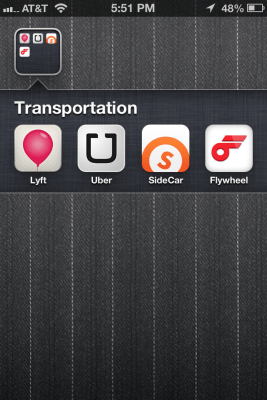Competition is heating up in the on-demand transportation industry, but unlike other segments of the market, there’s no lock-in that keeps customers loyal to one service or another. Users looking for a way to get from one place to another seemingly only care about the cost, convenience and reliability of the service.
With that in mind, services like Uber and Lyft aren’t fighting to be the only app people use necessarily, but they definitely want to be the first app passengers turn to when requesting a ride. With convenience and reliability becoming commoditized, the next battle will be waged based on price.
Making On-Demand A Commodity
Once upon a time, Uber was pretty much the only game in town if you needed a fast, reliable alternative to hailing a cab on the street or calling one of the local taxi dispatchers. It’s not surprising, then, that it charged a premium for that convenience and reliability. If you needed to be somewhere, it was worth it to pay a little bit more to know that a car was on its way and, well, how far away that car would be.
Over the last few years, however, competitors have popped up with on-demand ride apps of their own. On the one hand there are apps like Hailo, which allow customers to use their phones to hail a taxi, rather than having to find one on the street or rely on a local dispatcher. And on the other hand, there were apps like Lyft, which rely on community, non-commercially licensed drivers to get passengers from point A to point B.
In both cases, Uber’s competitors undercut its traditional black car prices by a significant margin. With convenience and reliability becoming commoditized, they’re competing on price instead.
Of course, Uber hasn’t been sitting still since its lower-cost competitors have arrived. It, too, has been working on making lower-priced options available to users. In cities like New York, that means its own e-hail taxi service. And in San Francisco and some other cities, it’s moving forward with its own peer-to-peer ride-share offering as part of its UBERx service.
First App Opened
But while UBERx’s prices are lower, they’re still above the typical cost of a Lyft or SideCar ride. That’s led some in the San Francisco Bay Area to switch. Anecdotally, I know a number of people who are active users of both services in San Francisco, but tend to open the Lyft app first when they need a ride.
Price is a big reason for choosing one over the other. But the community aspect is another reason. Say what you will about the big pink mustaches on Lyft rides, or the obligatory fist bump when you enter the car of one of its drivers, but those things let users to know what kind of experience they can expect when they get into a Lyft. (Then again, it’s not for everyone — I know plenty of people who would prefer not to get into a conversation with their driver when requesting a ride.)
For a while, even if those users opened the Lyft app first, there was no guarantee that there would be rides available. The startup went through some growing pains in San Francisco at the beginning of the year, as demand outstripped its supply. It seems like Lyft has gotten those problems mostly under control over the last few months, as it more than doubled the number of drivers it has serving the city.
Even still, there are times when an Uber will be available and a Lyft will not. In those cases, Uber wins the ride, but those cases are becoming rarer as Lyft removes its supply constraints and better positions its drivers.
Price Wars Are Coming
What happens if UBERx becomes cheaper than Lyft, though? That’s a scenario we will see play out soon, as Uber is poised to lower the price of UBERx fares by 25 percent, according to a memo it sent its drivers last week. While lower fares will reduce the amount drivers will make per ride, Uber is betting that the increase in volume will more than make up for it.
That’s a bet Uber likely feels comfortable making, in part because it has years of data to back it up. And it’s a bet that Uber can make in part because it has a diversified set of higher-priced services in UberBLACK and UberSUV that will be able to provide healthier margins even as it reduces fares on UBERx.
Will that make it first app opened? Or maybe only app opened? You can be the guys at Uber sure hope so.
